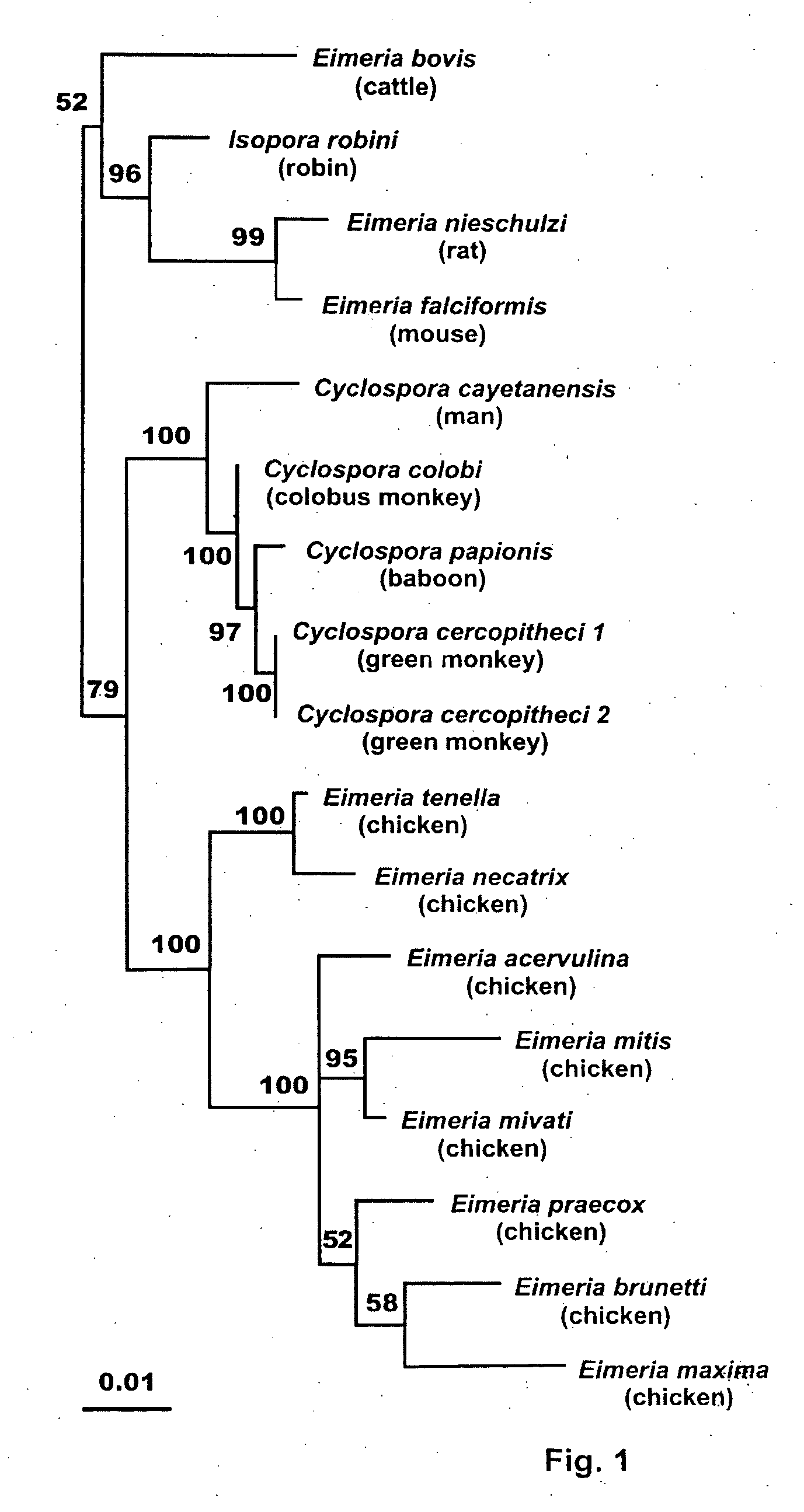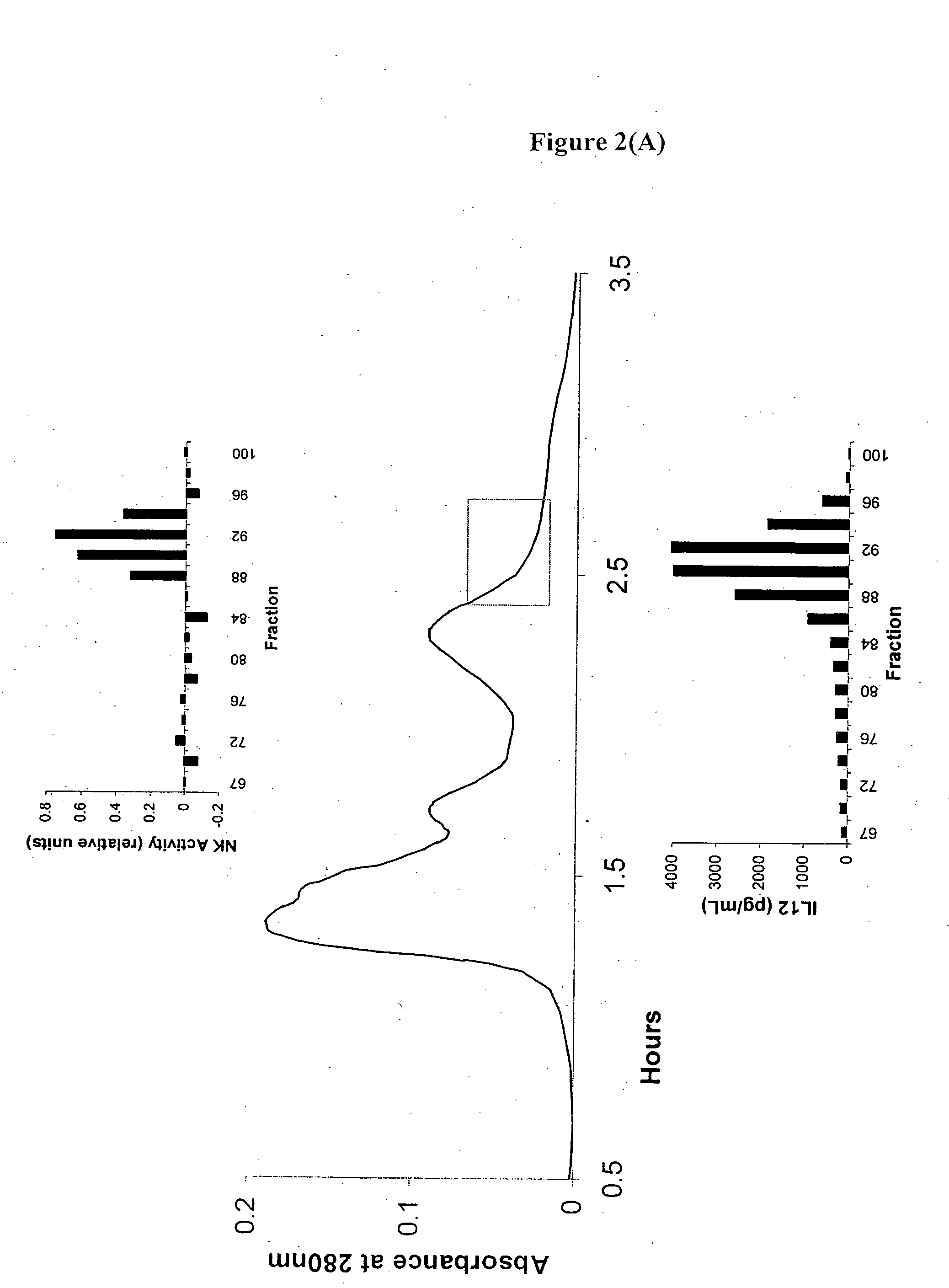Compositions and methods for immunotherapy of cancer and infectious diseases
a cancer and infectious disease technology, applied in the field of compositions and methods for immunotherapy of cancer and infectious diseases, can solve the problems of easy damage or destruction, unfavorable work, and death by the destruction of the cells of bone marrow and epithelial cells
- Summary
- Abstract
- Description
- Claims
- Application Information
AI Technical Summary
Benefits of technology
Problems solved by technology
Method used
Image
Examples
example 1
Purification of ARP from Bovine Small Intestine Extracts
[0331] Material
[0332] Source of intestines used in the examples: large animal intestines were obtained from freshly slaughtered cows. These were routinely obtained from Bellingar Packing, Ashley, Mich. Rat and mouse intestines were obtained from Sprague Dawley rats or BALB-c mice, purchased from Harlan Industries, Indianapolis, Ind. Pig intestines were obtained from Bellingar Packing. Some pig and cow intestines were also obtained from Bain's Packing & Refrigeration, Howell, Mich.
[0333] Methods
Enriched or Isolated ARP
Extraction and Centrifugation
[0334] Bovine small intestine ileal sections (25 feet or 40 feet) proximal to the cecum were excised from animals immediately after slaughter. Each section was slit down its length and the contents flushed free. Washing was initiated at the slaughterhouse in phosphate buffered saline (PBS) plus ciprofloxacin (10 mg / L) and was completed in the laboratory. The tissue was transport...
example 2
Identification of Sporozoite Antigen Protein
[0375] Protein sequencing services were provided by the Macromolecular Structure Facility at MSU (Edman procedure) and M-Scan Inc., West Chester, Pa. (MS-MS procedure).
[0376] Tryptic peptides for Edman sequencing were prepared using the following procedure. Active fractions, typically 1 mL, from several C8 separations were placed in microcentrifuge tubes and evaporated to near dryness under vacuum (Centrivap Concentrator, Labconco, Kansas City Mo.) at 35° C. All sample tubes were washed three times with 200 μL of 60% HPLC acetonitrile / 40% HPLC water / 0.1% TFA, each time reducing the volume to near dryness. After the third wash, all fractions were combined into a single microcentrifuge tube and were washed twice with 500 μL of HPLC water again reducing to near dryness after each wash. The combined sample, reduced to approximately 15 μL, was diluted to 125 μL in the digestion buffer (100 mM Tris (reagent grade, Sigma-Aldrich, St. Louis Mo.)...
example 3
Extraction of Activity from E. tenella Oocvsts
[0383] Oocysts can be obtained from intentionally infected animals, from barnyard soils, or from feces of infected animal. Methods of isolating oocysts are known in the art. See, e.g., Tomley, Methods: A companion to Methods in Enzymology 13: 171-176 (1997), which is incorporated herein in its entirety by reference. For example, one protocol that can be used to obtain sporulated oocysts is as follows: infect 6- to 8-week old Light Sussex chickens by oral dosing with between 103 and 6×103 sporulated oocysts and recover oocysts from the ceca 7 days later using either enzymatic or chemical treatment (e.g., remove and cut ceca, add phosphate-buffered distilled water, pH 8.0, and homogenize to a fine pulp with a commercial blender; add trypsin (Difcon 1:250 powder) to a final concentration of 1.5% w / v; incubate at 41° C. for 30 min, strain through two thicknesses of muslin, and centrifuge at 1000 g for 10 min; discard the supernatant, replac...
PUM
| Property | Measurement | Unit |
|---|---|---|
| Fraction | aaaaa | aaaaa |
| Fraction | aaaaa | aaaaa |
| Fraction | aaaaa | aaaaa |
Abstract
Description
Claims
Application Information
 Login to View More
Login to View More - R&D
- Intellectual Property
- Life Sciences
- Materials
- Tech Scout
- Unparalleled Data Quality
- Higher Quality Content
- 60% Fewer Hallucinations
Browse by: Latest US Patents, China's latest patents, Technical Efficacy Thesaurus, Application Domain, Technology Topic, Popular Technical Reports.
© 2025 PatSnap. All rights reserved.Legal|Privacy policy|Modern Slavery Act Transparency Statement|Sitemap|About US| Contact US: help@patsnap.com



